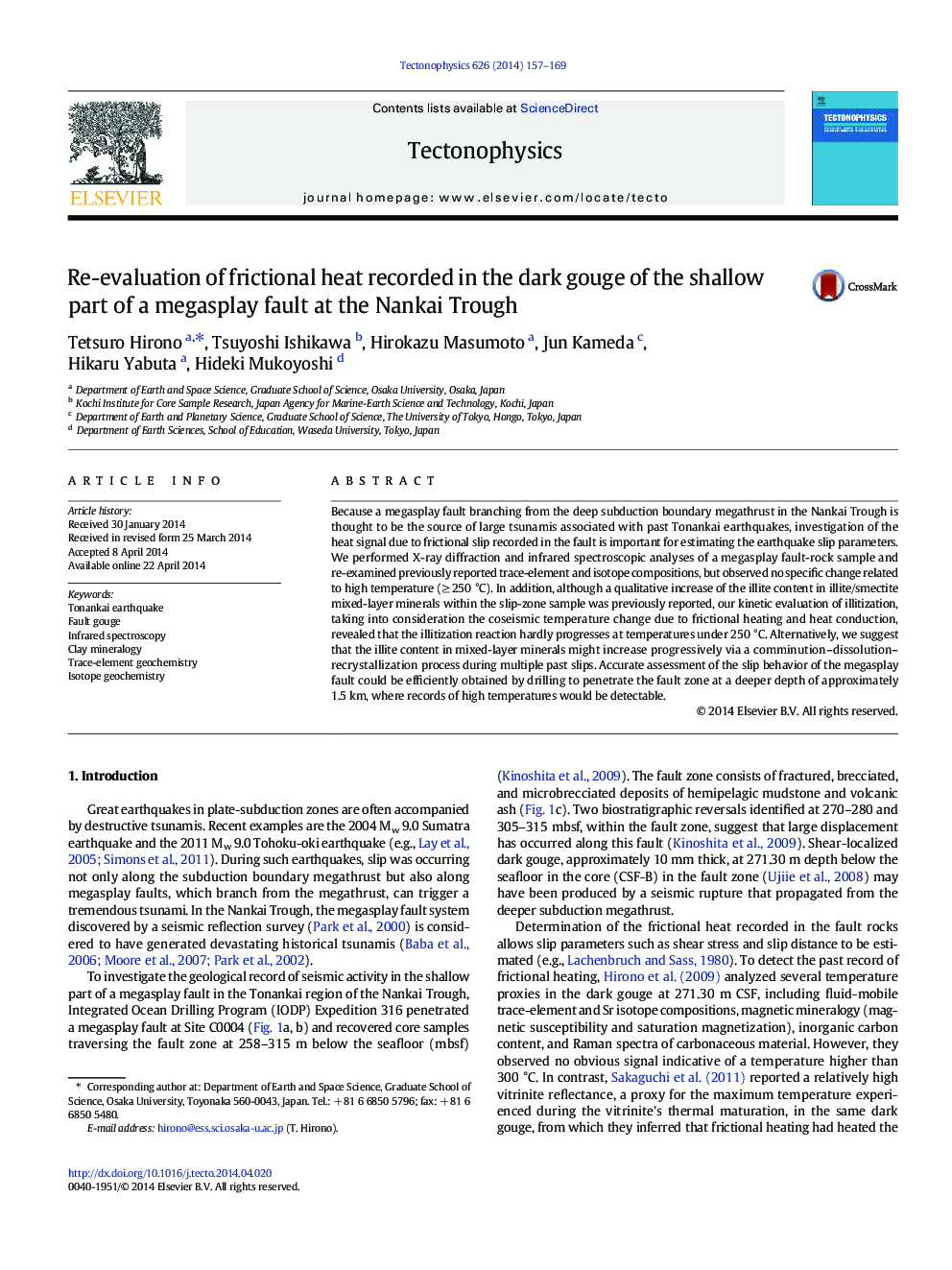| کد مقاله | کد نشریه | سال انتشار | مقاله انگلیسی | نسخه تمام متن |
|---|---|---|---|---|
| 6433845 | 1636765 | 2014 | 13 صفحه PDF | دانلود رایگان |

- No record of high temperature (â¥Â 250 °C) was observed in the megasplay fault.
- Illitization hardly progresses kinetically at temperatures under 250 °C during slip.
- Deep drilling of approximately 1.5Â km is efficient to detect frictional heat signal.
Because a megasplay fault branching from the deep subduction boundary megathrust in the Nankai Trough is thought to be the source of large tsunamis associated with past Tonankai earthquakes, investigation of the heat signal due to frictional slip recorded in the fault is important for estimating the earthquake slip parameters. We performed X-ray diffraction and infrared spectroscopic analyses of a megasplay fault-rock sample and re-examined previously reported trace-element and isotope compositions, but observed no specific change related to high temperature (â¥Â 250 °C). In addition, although a qualitative increase of the illite content in illite/smectite mixed-layer minerals within the slip-zone sample was previously reported, our kinetic evaluation of illitization, taking into consideration the coseismic temperature change due to frictional heating and heat conduction, revealed that the illitization reaction hardly progresses at temperatures under 250 °C. Alternatively, we suggest that the illite content in mixed-layer minerals might increase progressively via a comminution-dissolution-recrystallization process during multiple past slips. Accurate assessment of the slip behavior of the megasplay fault could be efficiently obtained by drilling to penetrate the fault zone at a deeper depth of approximately 1.5 km, where records of high temperatures would be detectable.
Journal: Tectonophysics - Volume 626, 20 June 2014, Pages 157-169